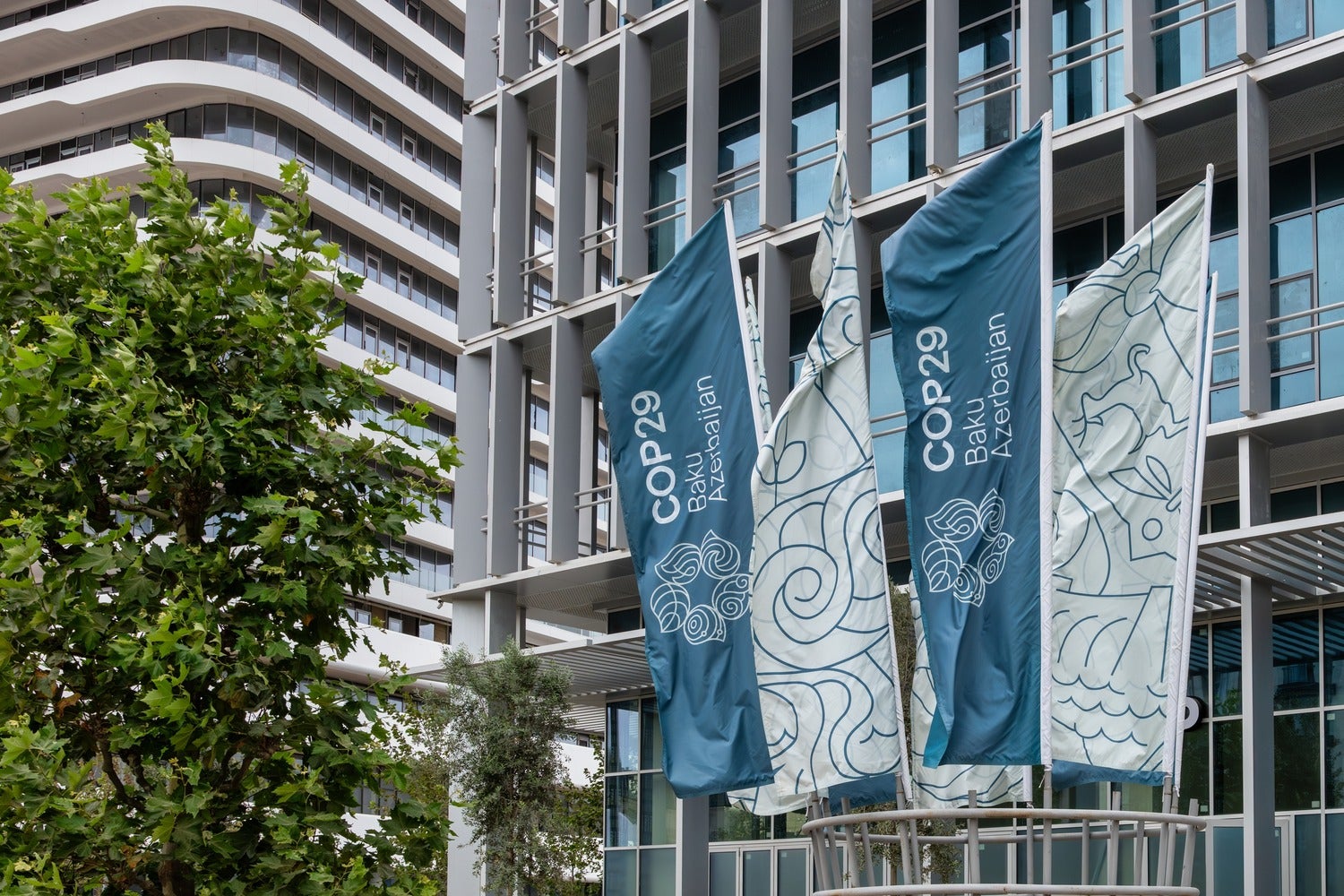COP29, the 29th annual installment of the U.N.’s climate conference, kicks off today. Until Nov. 22, leaders from across the world (with some notable exceptions) will meet in Baku, Azerbaijan, to clock in on global progress toward the goals set in the Paris Agreement, and set the climate agenda for the next year and beyond. These discussions come as countries are staring down a February deadline to release their action plans to curb heating after last year’s “stocktake”—which is essentially a report card of the world’s progress.
Much of what happens at COPs is wonky bureaucratic bargaining, and it can be hard to cut through the geopolitics of it all—particularly when the U.S. election has sent negotiators’ heads spinning. So, we’ve made these cliff’s notes on three of the major focus areas of COP29, including some recommended reading if you want to dig further.
Finding the money
COP29 earned the nickname “the finance COP” because money is its No. 1 focus. The 2015 Paris Agreement tasks wealthy nations that contribute the most to global emissions with providing funding for mitigation and adaptation to poorer countries that have contributed the least to human-caused warming but are some of the most affected by it. Previously, wealthy countries agreed to collectively contribute $100 billion per year—although they failed to meet that goal in 2020 and 2021, and projections put the actual price tag for helping developing countries with energy transition and climate adaptation at at least $1 trillion per year. COP29 will be a debate as to what that number should be, who will contribute to it, and where that money will go, like, for example, the Fund for Responding to Loss and Damage from climate-related disasters.
Go deeper: Carbon Brief’s overview of finance issues at COP29 digs into key terms, figures, and the major players.
Where’s the energy transition?
At COP28, countries agreed to “phase down” (note: not “phase out”) fossil-fuel use and triple global renewable energy capacity by 2030. But the COP29 agenda does not directly refer to any such energy transition. The omission has raised fears of a backslide on any progress toward ending the era of fossil fuels—especially given that the COP29 host country, Azerbaijan, is pretty oily. Its president even called the nation’s gas and oil reserves “a gift from God” at a climate conference in April. Its government has also jailed a prominent economist who has spoken out against the country’s use of fossil fuels. Other countries will step up to lead the energy transition conversation, but to what degree remains to be seen.
Go deeper: Climate Home News’ primer explores what making good on promises made in Dubai last year could look like.
What do we do about carbon credits?
Article 6 of the Paris Agreement creates a U.N. carbon market, which is a system of credits that nations can trade, allowing them to offset emissions by investing in green projects. The policy has long been discussed at annual climate conferences without resolution. There’s hope that this could be the year countries at long last agree on how to implement it, as the Azerbaijani leadership has named it a priority. To do so, the parties will have to reach an agreement on the systems and tools that will make it work—like how to measure whether the projects being funded by the credits are actually reducing emissions.
Go deeper: Carbon Market Watch’s explainer explores what it would take to make Article 6 work.

